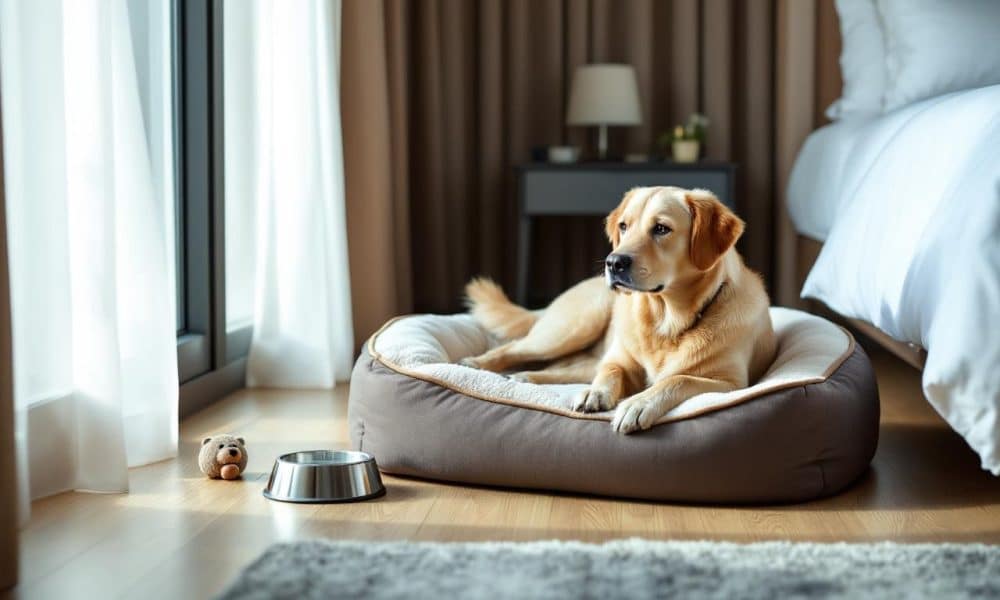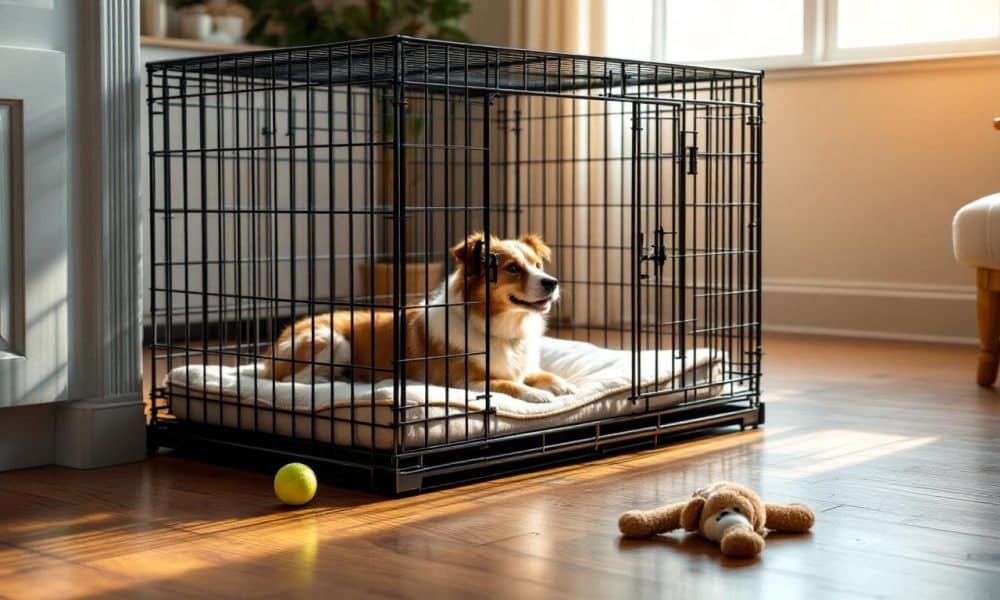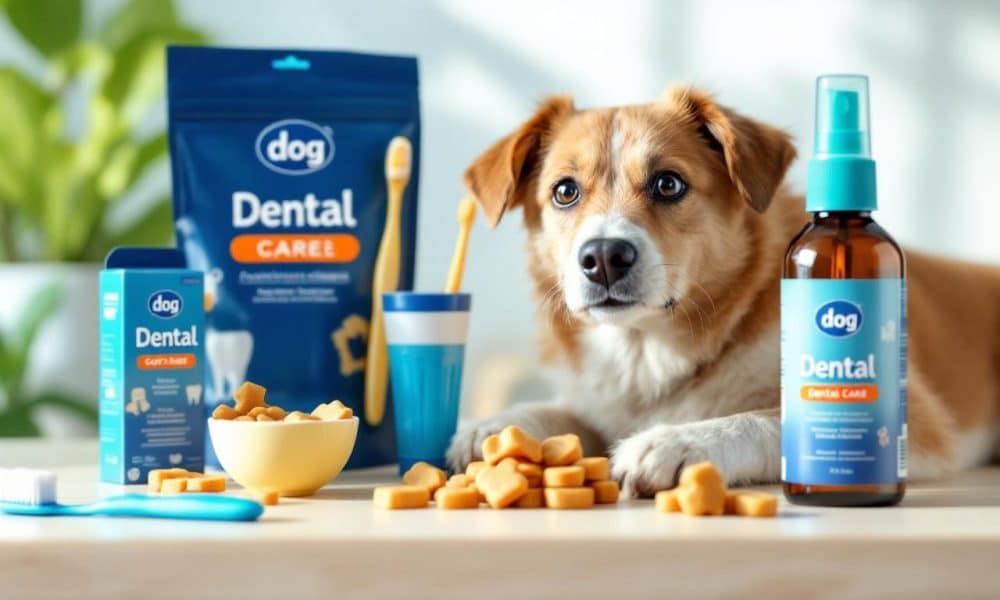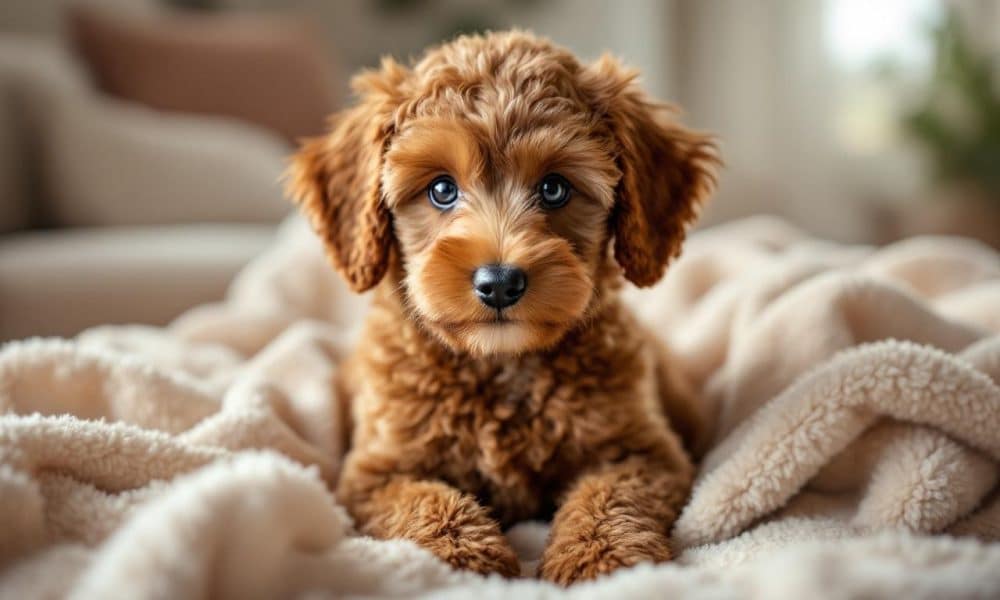
“This post contains affiliate links, and I will be compensated if you make a purchase after clicking on my links.”
At DogingtonPost, we know that bringing a new puppy home is exciting and challenging.
Proper training is key to raising a well-behaved and happy dog. Our essential dog training tips for puppies will help you start off on the right paw.
Let’s explore effective techniques to teach your furry friend basic commands, establish good habits, and build a strong bond.
When to Start Training Your Puppy
At DogingtonPost, we believe that proper training forms the foundation for a well-behaved and happy dog. Let’s explore when to start training your puppy and what to focus on during the early stages.
The Ideal Starting Age
You should start training your puppy the moment you bring them home. This early start sets the groundwork for a well-behaved adult dog.
The Critical Socialization Window
The socialisation period in dog puppies (approximately 3-12 weeks) is one of the most important periods in determining later behaviour. During this period, puppies show the most receptiveness to new experiences. You should expose your puppy to various people, animals, sounds, and environments. This exposure helps prevent fear and anxiety later in life.
A study by the Journal of Veterinary Behavior found that puppies who attended socialization classes responded more positively to unfamiliar dogs and people. These classes also provide an excellent opportunity for basic obedience training.
Establishing Good Habits
Early training helps establish good habits and prevents bad ones from forming. For example, teaching your puppy to use a designated potty area from day one can prevent house-soiling issues in the future.
Realistic Expectations
While early training is important, you must set realistic expectations. Puppies have short attention spans and limited bladder control. Try to keep training sessions brief (around 5-10 minutes), several times a day. Consistency is key.
Different breeds mature at different rates. Larger breeds like Great Danes may take up to two years to reach full maturity, while smaller breeds like Chihuahuas mature faster.
Age-Appropriate Training
You should adjust your training methods as your puppy grows. For very young puppies (8-10 weeks), focus on basic commands like “sit” and “come.” As they reach 10-12 weeks, introduce more complex commands like “stay” and “leave it.”
The effort you put in during these early weeks will pay off in years of companionship with a well-adjusted, obedient dog. In the next section, we’ll discuss the essential commands every puppy should learn and how to teach them effectively.
Essential Puppy Commands
Mastering the Basics
Training your puppy sets the foundation for a well-behaved adult dog. Focus on a few key commands to start. These will help you communicate effectively with your furry friend and ensure their safety.
Start with the command “sit.” Hold a treat close to your puppy’s nose, then slowly move your hand up and back. As their head follows the treat, their bottom will naturally lower. Once they’re in a sitting position, say “sit” and immediately reward them. Repeat this process several times a day.
For “stay,” ask your puppy to sit, then take a step back. If they remain seated, quickly return and reward them. Gradually increase the distance and duration. Always use a release word like “okay” to signal the end of the stay.
The “come” command is essential for your puppy’s safety. Start in a quiet area, say your puppy’s name followed by “come,” and encourage them to approach you. When they do, reward them generously. Practice this in various locations with increasing distractions.

Leash Training Simplified
Leash training ensures enjoyable walks. Begin by letting your puppy wear their collar and leash around the house under supervision. This helps them get used to the feeling. When you start walking outside, use treats to encourage your puppy to stay by your side. If they pull, stop walking immediately. Only move forward when the leash is slack. Consistency is key here.
Housebreaking Success
Establish a consistent routine for potty breaks. Take your puppy out first thing in the morning, after meals, naps, and playtime. Choose a specific spot outside and use a command like “go potty.” When they eliminate, praise them enthusiastically and offer a treat.
Training methods based on the use of rewards are claimed to be more humane and equally or more effective than aversive or mixed methods. Accidents will happen (it’s part of the process). Clean them thoroughly with an enzymatic cleaner to remove the scent and prevent repeat incidents.
Crate Training Benefits
A crate can become a safe haven for your puppy. Introduce the crate gradually by placing treats and toys inside. Feed meals in the crate with the door open. As your puppy becomes comfortable, start closing the door for short periods while you’re in the room. Gradually increase the duration and start leaving the room for brief moments.
Never use the crate as punishment. It should always associate with positive experiences. A study by the American Veterinary Society of Animal Behavior found that dogs who view their crate positively experience less anxiety when left alone.
Training your puppy requires patience and consistency. Keep sessions short and fun, ending on a positive note. With these essential commands and techniques, you’re well on your way to raising a well-mannered canine companion. In the next section, we’ll explore positive reinforcement techniques to make your training sessions even more effective.
Positive Reinforcement: The Key to Effective Puppy Training
The Power of Treats and Praise
Positive reinforcement is the most effective method to train your puppy. This approach rewards good behavior instead of punishing bad behavior. Treats motivate puppies powerfully. Select small, soft treats your puppy can eat quickly. This allows frequent rewards without overfeeding. Vary the treats to maintain your puppy’s interest. Effective options include small pieces of cooked chicken, cheese, or commercial training treats.
Timing matters when using treats. Reward your puppy immediately after they perform the desired behavior. This helps them connect the action with the reward. If you delay, your puppy might not understand what they’re being rewarded for.
Don’t underestimate verbal praise and physical affection. A cheerful “Good dog!” or a gentle pat can be as rewarding as a treat for many puppies. Use a mix of treats, praise, and petting to reinforce good behavior.

Clicker Training for Precision
Clicker training is a popular form of positive reinforcement. It uses a small device that makes a clicking sound to mark the exact moment your puppy performs the desired behavior. This precision helps your puppy understand exactly what they did right.
To start clicker training, first “charge” the clicker by clicking and immediately giving a treat. Repeat this several times until your puppy associates the click with a reward. Then, use the clicker to mark desired behaviors during training sessions.
For example, when teaching “sit,” click the moment your puppy’s bottom touches the ground, then immediately give a treat. This clear communication helps your puppy learn faster.
Consistency Across the Household
For positive reinforcement to work, everyone in your household must follow the same approach. Inconsistency can confuse your puppy and slow down the training process.
Organize a family meeting to agree on training methods, commands, and rules. For instance, if one person allows the puppy on the couch while another doesn’t, the puppy will be confused about what’s expected.
Create a chart listing common commands and their associated hand signals. Post this in a visible area to help everyone stay consistent. Regular family training sessions can also ensure everyone uses the same techniques.
Patience and Persistence
Patience is essential in puppy training. Some puppies learn quickly, while others take more time. Stay positive and consistent, and you’ll see results. (Every puppy is unique, so adjust your expectations accordingly.)
Avoiding Punishment-Based Methods
Punishment-based training methods can lead to fear and anxiety in puppies. These methods might seem to work in the short term, but they often cause long-term behavioral problems.
Instead of punishing unwanted behavior, redirect your puppy to a more appropriate activity. For example, if your puppy chews on furniture, offer them a chew toy instead. This teaches them what they should do, rather than just what they shouldn’t do.
Final Thoughts
Training your puppy requires dedication, consistency, and patience. You will set the foundation for a well-behaved adult dog if you start early and use positive reinforcement techniques. Every puppy learns at their own pace, so adjust your expectations and celebrate small victories along the way.
The key principles we covered form the backbone of effective puppy training. Consistency across all family members ensures your puppy receives clear, uniform messages about expected behavior. This unified approach, combined with plenty of praise and rewards, creates a positive learning environment for your furry friend.
As your puppy grows, their training needs will evolve. Stay informed about the latest dog training tips for puppies and continue to reinforce good behaviors throughout your dog’s life. For ongoing education and support, we at DogingtonPost offer a wealth of resources for dog owners. Enjoy the process, cherish the bond you’re building, and look forward to the wonderful adventures ahead with your four-legged friend.







